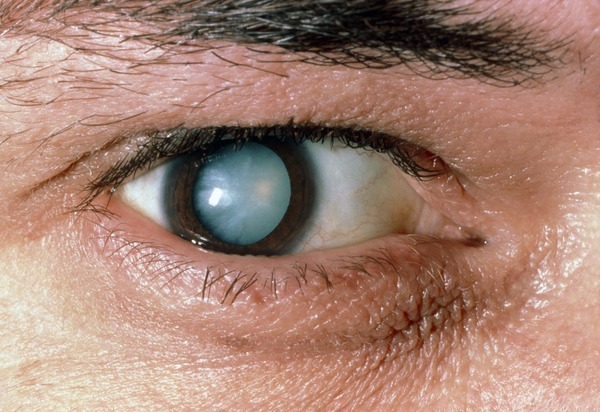This article provides a comprehensive understanding of the different types of cataracts, including nuclear, cortical, and subcapsular cataracts, their causes, and associated symptoms.
What is a Cataract?
The word cataract is derived in the Middle Ages, from the Greek word “katarraktes” which means waterfall. A cataract is any opacity in a natural crystalline lens or capsule inside our eye. Natural lens is transparent allowing all the light rays to go inside our eye and give clear vision. Whenever there is opacity in the natural lens or its capsule, it causes blurring or compromise in the vision. A cataract is one of the most common causes of decreased vision worldwide. Though it can affect any age group, it is more commonly seen in people above 45 years. With this basic understanding, we’ll discuss a few important aspects related to various types of cataracts.

Types of Cataracts
There are various types of cataracts, based on the site of the cataract formed, based on the etiology of cataract formation. These classifications make understanding disease, easier.
The natural lens is divided into various parts. The central part is the nucleus, surrounded by the cortex. This is enclosed in a thin layer called the lens capsule. This whole unit is placed just behind the cornea. Light has to pass through all these transparent parts in the eye, to get a clear image.
Based on the site of cataract formation inside the lens, there are different types of cataracts. This includes:
- Nuclear cataract: This is a type of cataract that is formed in the central part of the natural lens. This type of cataract is more common and is usually an age-related type of cataract.
- Cortical cataract: This is another type of cataract, that affects the cortex part of the lens. This is also an age-related type of cataract.
- Capsular cataract: This is a type of cataract that affects the lens capsule. When the front part of the capsule is involved, it is called an anterior capsular cataract. When the posterior part of the capsule is involved, it is called a posterior capsular cataract.
- Subcapsular cataract: This type of cataract affects the superficial part of the cortex, just below the capsule. This type of cataract may be an anterior subcapsular cataract or posterior subcapsular cataract based on which part of the lens is involved.
- Polar cataract: This type of cataract involves the capsule and cortex in the polar region only. This can be either anterior polar cataracts or posterior polar cataracts. Posterior pole cataract is associated with more chances of complications during cataract surgery.
Based on the etiology or the cause of cataracts, they are divided into the following types:
- Congenital Cataract: Cataracts may be present in children also. A cataract present during birth is termed a congenital cataract. These cataracts are usually related to various systemic problems, preterm delivery infections. Some of the types of cataracts present by birth are associated with syndromes such as Down’s syndrome, Turner syndrome, and calcium-related disease in children. Congenital cataracts can also be hereditary in some cases.
- Age-related Cataract or Senile Cataract: Age-related cataract is the most common type of cataract. Ageing causes various changes in the natural lens. Natural lens is made up of proteins, which causes certain changes in these proteins causing opacity of the lens leading to cataract. this age-related cataract can be any type of cataract, such as nuclear cataract, cortical cataract, polar, subcapsular and others. Nuclear and cortical types of cataracts are more common types of age-related cataracts. There are various risk factors related to the age of onset of cataracts.
- Traumatic Cataract: This type of cataract is formed following trauma. Trauma or any injury to the eye can lead to disruption of the lens leading to a type of cataract called traumatic cataract. This can also be associated with any other injury involving a head injury.
- Metabolic Cataract: Many systemic diseases like diabetes mellitus can cause cataracts or can accelerate the process of cataract formation. This is usually related to alteration in the lens proteins, leading to cataracts. diabetes mellitus is the most common systemic disease. People with diabetes usually have cataracts at a younger age. Diabetic retinopathy is another concern in patients with diabetes. So regular eye check-up is a must in people with diabetes.
- Complicated Cataract: This type of cataract is rare, and usually occurs as a complication of any other eye diseases. This could be because of high refractive power like pathological myopia, which can be a complication of inflammation of the eye called uveitis.
- Radiation Cataract: Certain wavelengths of ultraviolet rays can lead to cataracts in the eye. This is a type of cataract usually seen as an occupational hazard.
- Drug-induced cataract: Certain drugs such as corticosteroids on long-term usage can cause cataract changes in the lens. More commonly seen in the young population, this type of cataract is of posterior subcapsular type of cataract. Various other drugs can also cause cataracts. This type of cataract is usually rare.
To summarize, there is various type of cataract, and age-related type of cataract is the most common. Other types of cataracts are usually rare. Surgical treatment in the form of removing cataracts and implanting an intraocular lens is the standard treatment for all types of cataracts.
Causes of Cataracts
Cataracts, the clouding of the eye’s natural lens, can be caused by a variety of factors. The most common cause is ageing, as the proteins in the lens gradually break down and clump together over time. Other factors contributing to cataract formation include long-term exposure to ultraviolet radiation from the sun, certain medical conditions such as diabetes, smoking, excessive alcohol consumption, prolonged use of corticosteroid medications, genetic predisposition, eye injuries, and inflammation. Additionally, some individuals may develop cataracts as a result of previous eye surgeries, such as those for glaucoma or retinal detachment. Understanding the causes of cataracts can help individuals take preventive measures and make informed decisions about their eye health.






